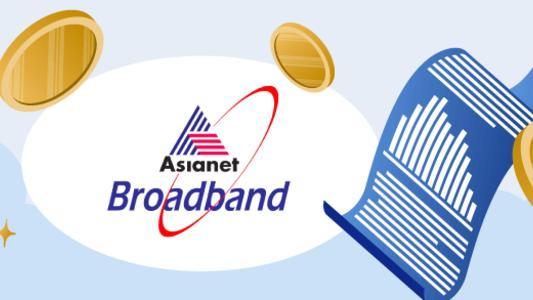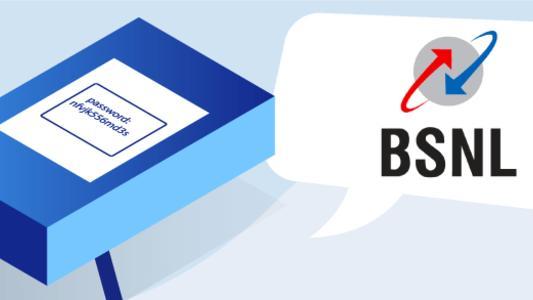SD-WAN Technology- Definition & Benefits For Your Business
In the past few years, we have witnessed a plethora of transformations in wide-area networks, SD-WAN full form, otherwise known as software-defined WAN. It is altering how network benefits think around optimizing the service of connectivity that is as various as MPLS abbreviation of Multiprotocol Label Switching, is a relay and precise DSL.
What is SD-WAN Technology?
SD-WAN technology (Software-defined Wide Area Network) is a WAN configuration that companies can use any transport service they want - comprises MPLS, broadband or 4G LTE networks - to increase the security & reach of their company's applications.
An SD-WAN Uses a centralized control function to securely and intelligently direct traffic across the WAN and directly to SaaS and IaaS providers. This increases application performance, delivering a high-quality user experience, which in turn increases business.
As a software-defined wide-area network links together data centers and remote branches across a geographic area. It does this in a similar way to software-defined networking, or SDN. However, instead of operating within a single organization's network, it connects different companies' IT networks.
How Does SD-WAN Work?
SD-WAN abstracts your existing connectivity options into a single application. You can use this to create networks with comparable efficiency that are more stable and also provide diversity.
SD-WANs offer a number of benefits for most work environments. They allow users to focus on more key aspects of the business such as productivity and quality output. This is because SD-WANs dedicate most of their resources to enhancing network security, connection availability and basic network administration.
For security reasons, a VPN connection is typically the best option for data transmission from remote offices to the main office. It's important to have a reliable & high-bandwidth internet connection that can handle this data.
If your branch office uses a single DSL, T1 or cable modem connection to communicate with the head office, you're likely to experience insufficient throughput and speed.
For uploading data as it is defined in SD-WAN technology Wikipedia from the branch enterprise to the head-quarter of your business. Businesses that rely on broadband connections to remote offices or clients will need multiple lines that provide more up-time.
SD-WAN enables high-speed IP communication between a head office and a branch office, as well as among numerous locations - for example, even over a very large area. The two devices form a data tunnel of an extremely fast speed between these sites.
How To Use SD-WAN?
There are many things we could say about SD-WAN technology. Let’s take a look at the main points and find out how SD-WANs work.
Centralized Management
SD-WAN is made up of centralized control and is controlled by a centralized system (usually provided in a SaaS application running on a public cloud). Decoupling the control from the hardware enables more control over the management of networks and improves the delivery of services. SD-WAN appliances are configured to follow the operational rules of the central SD-WAN controller.
Multi-connection And Transport
SD-WAN gateways allow for a hybrid WAN connection, meaning that each gateway can be connected to different networks using different transit methods—MPLS, broadband Internet or LTE. A VPN is usually set up on each of these connections for security. Because of this, SD-WANs can be overlays that span across an already existing communication infrastructure.
Dynamic Course Section
SD-WANs provide dynamic connection options, giving you the ability to automatically route traffic onto one WAN link or another based on network conditions. Packet switching can sometimes take a packet to a different route if a certain link is down or unreliable. SD-WAN allows you to identify packets by their protocol, user, or other factors. The complicated neural network splits people into segments based on features that are important to you.
Policy-based Control
SD-WAN technology supports QoS policy, which determines where dynamic path selection will steer traffic. Policies also determine what level of priority (QoS) is given to your application. Business intentions can be integrated into policies. All the policies are converted into instructions that are then downloaded to all of the network devices.
Service Relaying
SD-WAN is also capable of linking together with other network services. One common usage of this linking is to enhance it with WAN Optimisation (acceleration) to improve the performance of your network and applications. Internet traffic between your branch office and cloud servers can be encrypted and shared through a VPN to improve network security.
What Are The Benefits Of SD-Wan?
The days of utilizing a specific company's VPN to connect online are over. With SD-WAN, a diverse network is deployed across a set of point-to-point connections for reliable and secure internet connections.
Your business' communication, collaboration and application software can now run optimally online. SD-WANs allow you to improve the connection between your different branches and they can be deployed across offices, shops etc. They're easy to set up and manage as well.
SD-WAN centralizes and automates cloud applications and makes sure they don't fail. The scalability and automation capabilities make it practical for any company to use these kinds of apps, no matter their size. Aside from making deployments much smoother and freeing up time, this also enables you to conduct a more detailed post-deployment analysis.
Security is a priority for modern businesses and SD-WANs can provide long-lasting data security with connectivity. They enable features to be present at each endpoint, which reduces the need to travel back to the data centers with sensitive data.
SD-WAN has been a great innovation for improving the user experience on networks. It can actively reroute traffic as needed, preventing downtime or network errors from being a huge issue.
This smart approach solves a lot of problems, such as link degradation among other things. This results in better collaboration opportunities by allowing modifications to be automatically synced across the board. Overall, this can create a better operation.
SD-WAN solutions offer a cost-effective upgrade, and they allow you to get more out of your existing infrastructure. Plus, the licensing shouldn't be overlooked: it's a significant value for money! On the other hand, VPNs and other low-cost broadband services open up the opportunity to phase out expensive ISPs for something cheaper.
SD-WANs are becoming more popular thanks to being able to support popular cloud based solutions such as Office 365, Salesforce, and major software apps. They are also supported by responsive performance reporting so you always have the opportunity to optimize workflows.
Here's How to Choose
Deploying SD-WAN can be tricky. The right technician will be able to work with the right platform, enabling you to unlock the network’s full potential while staying within budget. With SD-WAN and a Specialization Architect technician with your association, the upcoming years of the business will become brighter than before.








